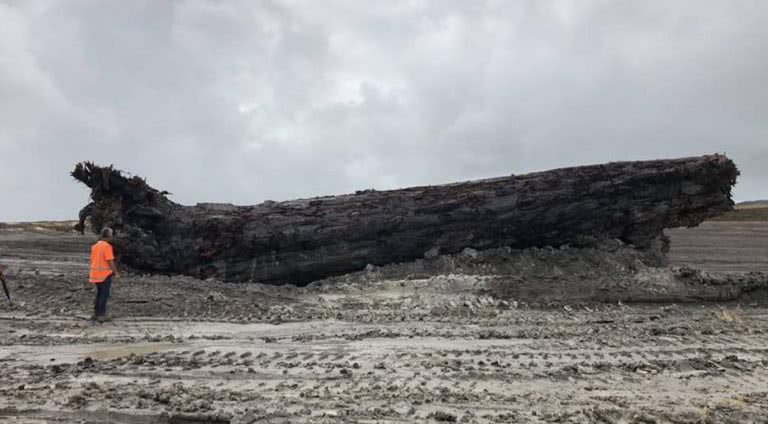This week, workers in New Zealand have stumbled upon a discovery that could shed light on one of the most unexplained and mysterious events to have ever occurred within Earth’s orbit.
The kauri log, discovered near Ngāwhā Springs in March has this week been carbon dated at 41,000 – 42,500 years old and may be the only surviving tree to have lived through Earth’s magnetic poles switching.
Titled the Laschamp geomagnetic anomaly, not a lot is known about what happened when Earth’s magnetic poles shifted.
If you’ve watched Doomsday Preppers, you’ll know that it genuinely means bad things. And they aren’t wrong. The event resulted in a huge and sudden change in Earth’s atmospheric composition.
Nowadays if it were to occur, it could sound the death knell for technology, throwing satellites et al into a spin.
Or, as Associate Professor Alan Hogg, director of Waikato University’s Waikato Radiocarbon Dating Laboratory puts it, “If this were to occur at present, it would probably have significant implications for modern technology because very much stronger cosmic radiation impinging on the Earth’s surface would almost certainly impact upon satellites and communication.”
The event also resulted in a weakening of Earth’s atmospheric pressure, allowing more radiation through. As such, studying the anomaly and the log could help us avoid even more climate disasters should it occur again.
Love Music?
Get your daily dose of metal, rock, indie, pop, and everything else in between.
Last time the event occurred, it took around 300 years for the full switch to happen. So, here’s hoping it doesn’t catch us off guard next time.
The discovery of the kauri log, measured at a decent 16m long and weighing 60 tonnes, came as workers excavated for a new geothermal power station near Ngāwhā Springs, discovering it about 8m underground.
Alan Hogg and his team will begin analysing the discovery, measuring atmospheric radiocarbon levels to learn about how the Laschamp geomagnetic anomaly impacted the planet.
The log is being described as the only one of its kind to be discovered. This is largely on account of extensive deforestation by Europeans in the region beginning in 1820. Prior to that, the region contained a dense population of kauri trees but now only 4% of the forest remains, per the NZ Herald.


































